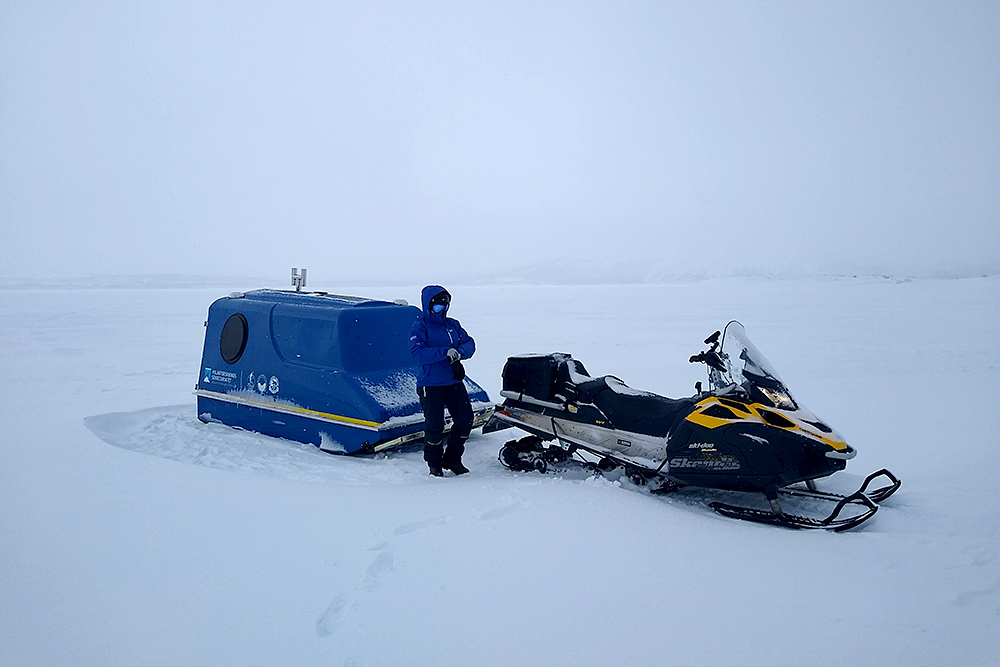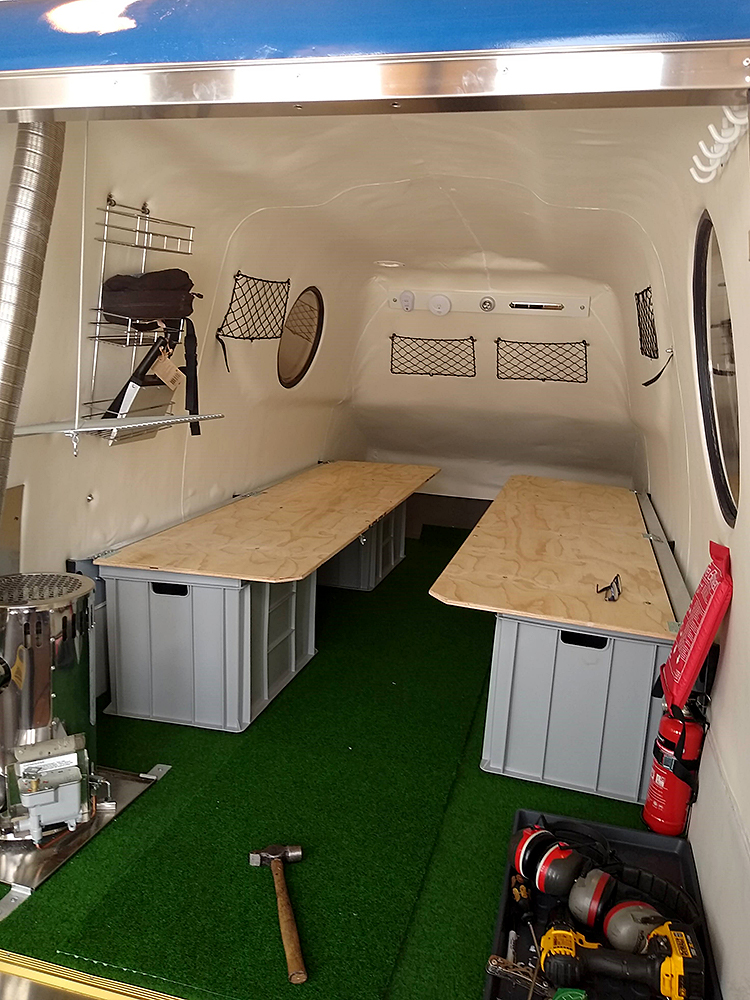
Up here in Norrbotten, an "ark" is a kind of living module, usually with a stove, which you pull out on the lake ice with a snowmobile. In the floor of the ark there is a hatch through which you can do ice angling, while you have a nice time in the warmth inside.
A few years ago, Håkan Grudd, deputy station manager, got the idea that arks might be something for our Antarctic expeditions. He contacted several manufacturers and in the end we decided on Järvsöarken. A special feature of their arks is that you can place a snowmobile inside the ark, which is a great advantage for transport and storage for a longer period of time.
After some discussions, they built three arks for us, which were then adapted to our needs in Antarctica, with e.g. snow melter, stove that allows cooking and solar cells for charging batteries. In the field season 2017-18, we used them for the first time on an expedition and it was clear that this was a good concept for expeditions into "deep field", i.e. so far away from research stations that one has to be self-sufficient, with the exception of fuel depots. Each "two-people set" consists of two snowmobiles, an ark, and a snowmobile sled (for fuel, research equipment, food, etc.)

In order to primarily be able to show and test living in arks during field courses, we have also purchased an ark for ANS. This also provides possible support for researchers who want to be able to live in the field in winter, away from the station and our field cabins.
Version 2 of our ark is 20 cm wider than the first one, which means that the beds are now 60 cm wide instead of 50 cm. The ark is equipped with fire extinguisher, carbon monoxide alarm, fire blanket, lighting, solar cells, 12v battery, USB charging, inverter 230 V, stove etc. In short, a small well-equipped "caravan" for snowmobiles, where two people can live quite comfortably.